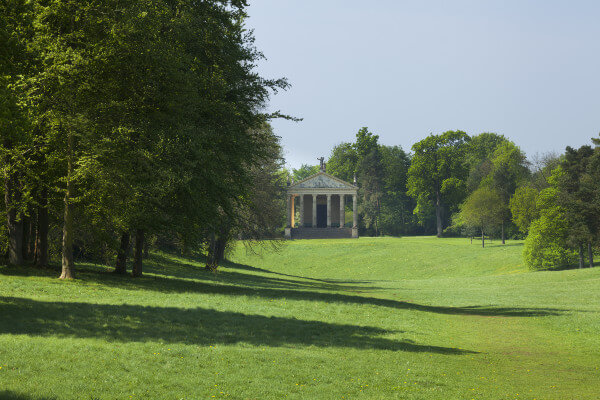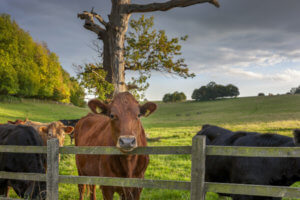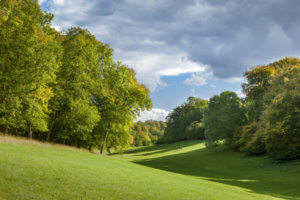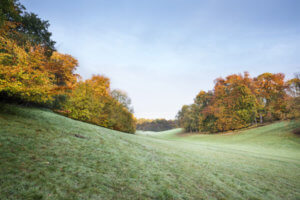The Legacy of Capability Brown

The legendary 18th-century landscape designer Capability Brown has left his mark on a number of properties in the Chilterns – most notably the Ashridge Estate.
Even if you are not a keen gardener, you are bound to have heard of Lancelot ‘Capability’ Brown. The influential 18th century landscape designer worked on a number of significant estates around the country, including Ashridge.
Capability Brown has been dubbed the ‘Shakespeare of gardening’. He is supposed to have got this nickname by announcing that sites had ‘great capability’.
In his early 20s, Capability Brown worked for Sir Richard Grenville at Wotton House, just west of Aylesbury, before moving to its larger sister estate at Stowe in 1741. Here he worked for Lord Cobham, on what was to become one of the greatest landscape gardens in the country. He became head gardener there and made a number of connections, thanks to Lord Cobham. He arrived at Ashridge in 1759, where he supervised the landscape work for the third Duke of Bridgewater – Francis, also known as the ‘Canal Duke’ – for around nine or 10 years before becoming the Master Gardener at Hampton Court Palace in 1764. Here he carved out a role as King George III’s friend and confidante.
 There’s a number of features that identify a work of Capability Brown; probably best known are the carriage drives, which helped landowners to both inspect and show off their land to visitors. You’ll also often see acres of turf, large areas of water and a ‘ha-ha’ – a ditch that prevents animals from coming too close to the house, but offers uninterrupted views that hedging and walls would not allow.
There’s a number of features that identify a work of Capability Brown; probably best known are the carriage drives, which helped landowners to both inspect and show off their land to visitors. You’ll also often see acres of turf, large areas of water and a ‘ha-ha’ – a ditch that prevents animals from coming too close to the house, but offers uninterrupted views that hedging and walls would not allow.
Brown’s vision was to create a naturalistic setting to surround the grand houses that he worked on (in all he carried out 170 commissions during his lifetime and is associated with a total 250 gardens and estates), with both clumps of and scattered trees. He liked to get rid of existing garden features – and had even been known to relocate entire villages to achieve his desired effect!
At Ashridge he wasn’t able to include all these features – the chalkland meant there was no existing water, so he couldn’t include any of his vast lakes. The Duke refused any proposed alterations to the straight-sided grass rides that cut through the estate woods, (which is why the Prince’s Riding and others are still there to this day).
Brown did however clear much of the woodland around the house, leaving in its place copses (a much-wanted feature in a time when shooting game birds as a pastime was becoming particularly popular). But he wasn’t working with the house we know today; it was almost entirely rebuilt in the 19th century, and then another well-known designer, Humphrey Repton, came in to redesign the gardens around the house. Repton purported to follow Brown in many ways, although the intricate designs here were in a quite different style.

Ashridge’s Golden Valley, which sits to the north and east of the house, is considered one of Brown’s greatest projects, thanks to his clever design and its impressive view. Originally a shallow wooded valley, he cleared the trees from the valley floor, leaving those along the upper slopes.
He also moved mountains of earth (by men using shovels, pickaxes and wheelbarrows), to create sloping and gentle bends. These make the valley appear as if it goes on endlessly, when in reality it only runs along a short distance. If you visit, for the best view, take a look back as you reach the northwestern end of the valley.
Other spots around the Chilterns that benefited from Brown’s design include Moor Park near Rickmansworth, Cole Green Park near Hertingfordbury, and Beechwood Park near Markyate. Further away, you can see his work at Blenheim Palace.
Find out more about Ashridge at www.nationaltrust.org.uk/ashridge-estate

Walk in Capability Brown’s footsteps
Follow this 3.8-mile walk, which heads into the Golden Valley and takes in the view of Ashridge House. You may even see some fallow deer along the way.
Walking trail: www.nationaltrust.org.uk/ashridge-estate/trails/trail-to-golden-valley-ashridge
Main image: The Temple of Concord & Victory at the head of the Grecian Valley at Stowe © National Trust Images/ Andrew Baskott

